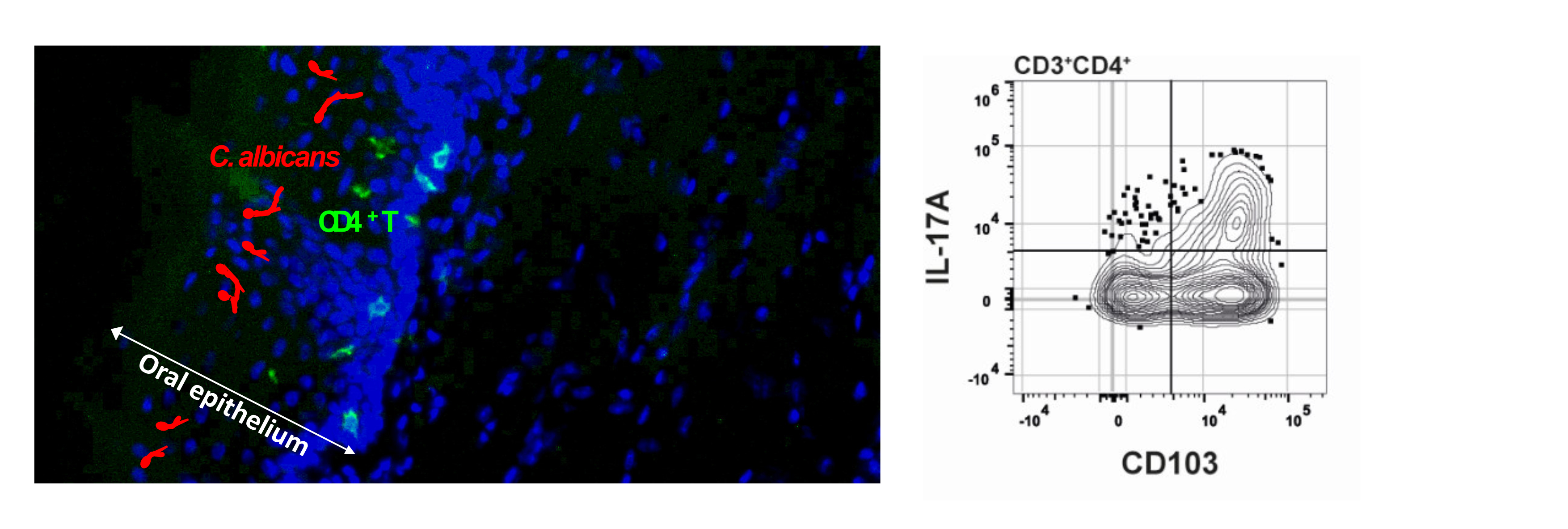Homeostatic immunity controlling Candida albicans commensalism in the oral mucosa.
Commensal fungi colonizing the barrier tissues are an integral part of homeostatic circuits that contribute to the maintenance of tissue homeostasis by protecting the barrier tissues against injury and infection. Besides their commensal lifestyle, many fungi can act as pathogens and overgrow, invade and/or damage the host epithelia. Therefore, commensal fungi themselves need to be strictly controlled.
The IL-17 pathway constitutes a critical mechanism of fungal control. Immunosurveillance of C. albicans commensalism is mediated by IL-17-secreting CD103+ tissue resident T cells (left ). Interruption of IL-17 signalling results in a strong increase of fungal colonization in the oral mucosa (right ).
In this project, we aim at understanding how tissue-resident Th17 cells contribute to stable fungal commensalism. For this, we use a new experimental model of persistent colonization of the oral mucosa with C. albicans in combination with flow cytometry-based and single-cell transcriptomic approaches.
